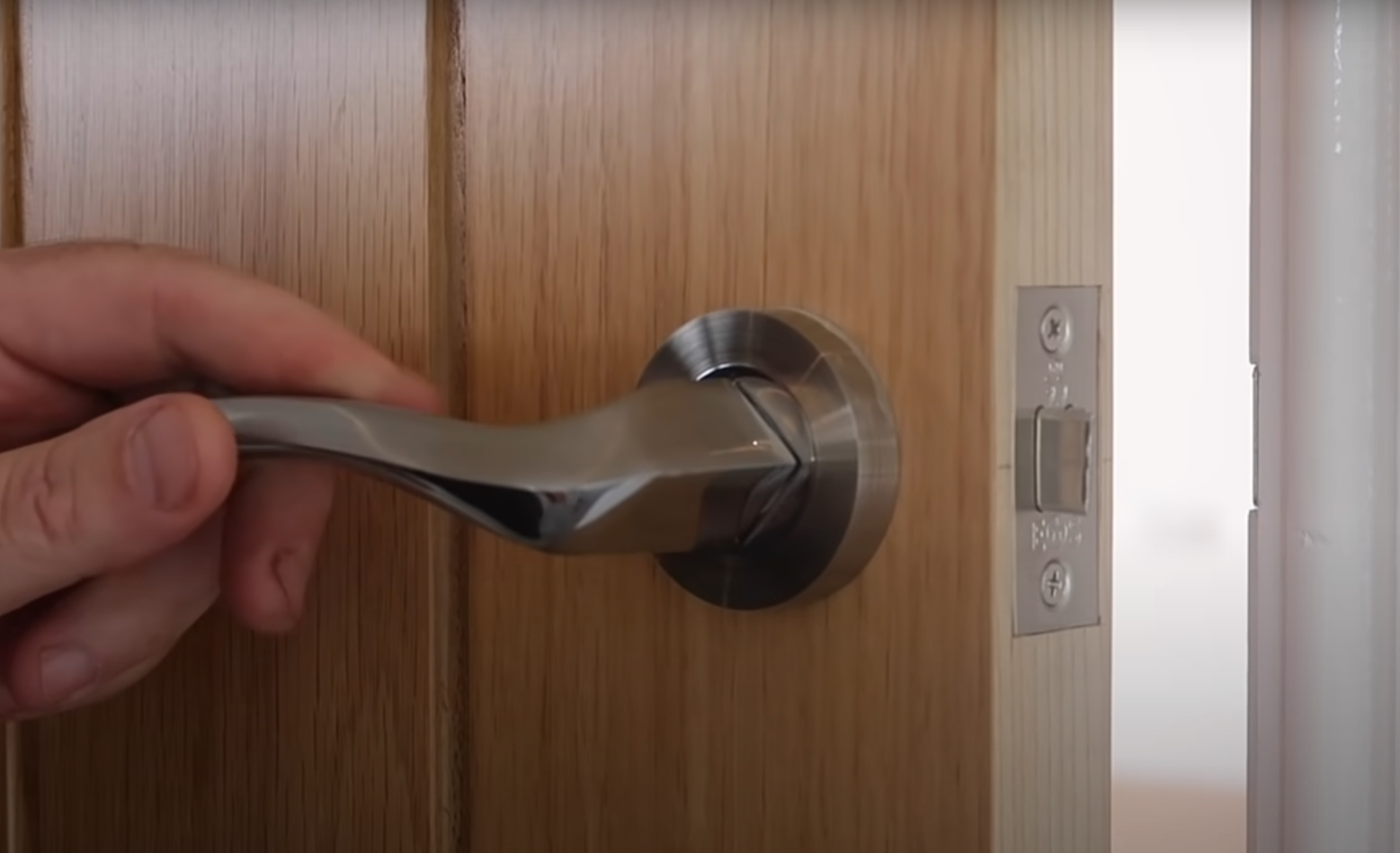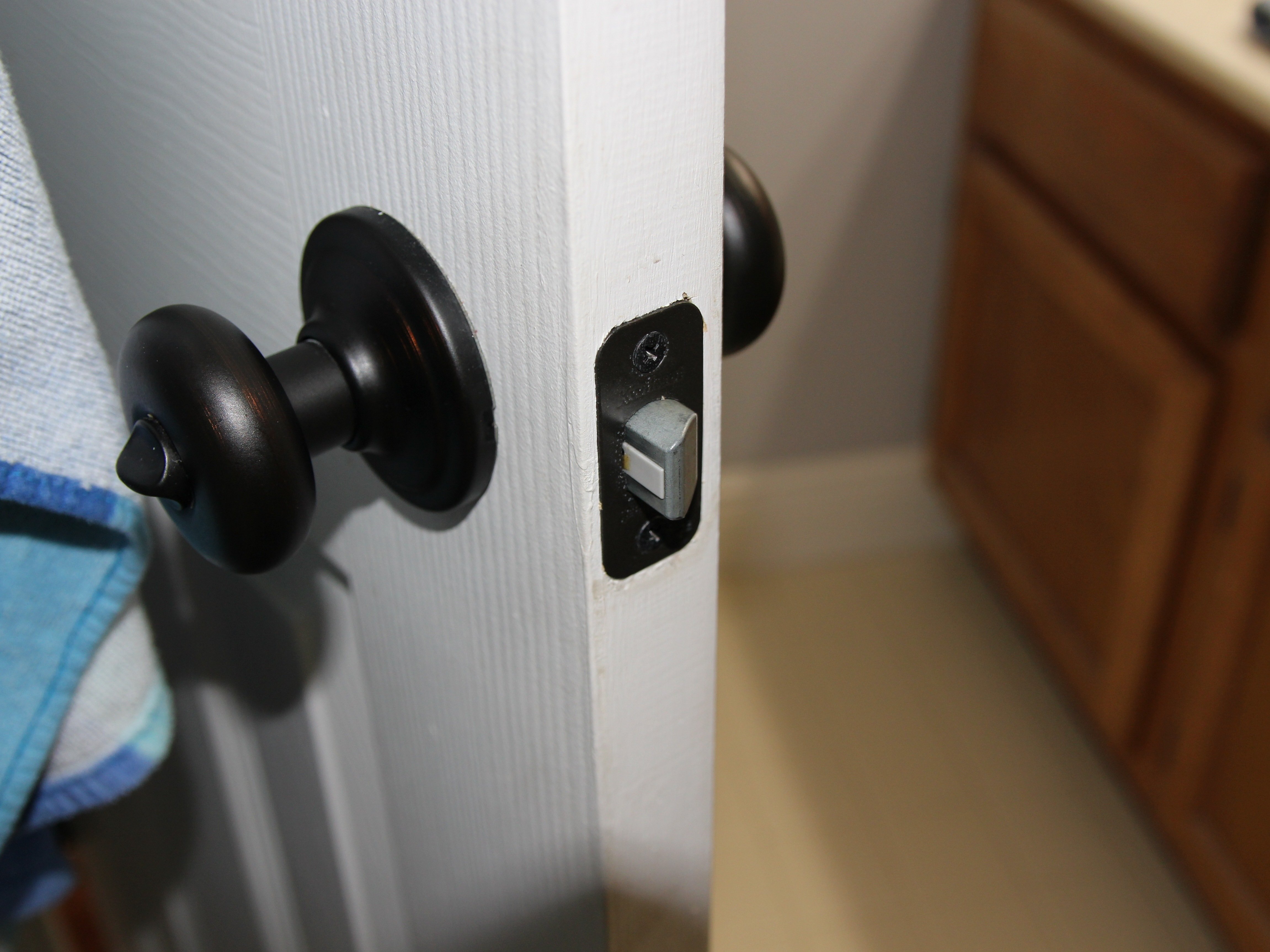Common Causes of a Bedroom Door Not Latching
A bedroom door that won’t latch properly can be a frustrating problem, often stemming from a combination of factors. The latching mechanism relies on a precise alignment of the door, frame, and hardware, and any misalignment can prevent the door from closing securely. Here are some common causes:
Door Handle Issues
The door handle is a crucial component in the latching process. If the handle is loose, damaged, or worn out, it can prevent the latch from engaging properly.
- Loose Handle: Over time, screws securing the handle to the door can loosen, causing the handle to wobble and preventing the latch from engaging correctly.
- Damaged Handle: A broken or damaged handle, especially the latch mechanism within the handle, can render the door unlatchable.
- Worn-Out Handle: Handles, particularly those made of metal, can wear down over time, leading to a weakened latching mechanism.
Strike Plate Issues
The strike plate is the metal plate mounted on the door frame that receives the latch. If the strike plate is misaligned, damaged, or worn, it can prevent the latch from engaging properly.
- Misaligned Strike Plate: The strike plate should be perfectly aligned with the latch on the door. If the strike plate is even slightly off, the latch may not be able to fully engage, resulting in a door that won’t latch properly.
- Damaged Strike Plate: A strike plate can become damaged due to repeated use, causing the latch to not fully engage.
- Worn-Out Strike Plate: The screws securing the strike plate to the frame can loosen over time, causing the plate to shift and misalign. Additionally, the metal of the strike plate itself can wear down, making it difficult for the latch to engage properly.
Hinge Issues
The hinges connect the door to the frame, allowing the door to swing freely. If the hinges are loose, damaged, or worn, they can cause the door to sag, making it difficult to latch properly.
- Loose Hinges: Over time, the screws securing the hinges to the door and frame can loosen, causing the hinges to sag and the door to misalign.
- Damaged Hinges: A damaged hinge, such as a bent or broken pin, can prevent the door from swinging smoothly, leading to latching issues.
- Worn-Out Hinges: Hinges, especially those made of metal, can wear down over time, causing the door to sag and misalign, making it difficult to latch properly.
Door Frame Issues
The door frame provides the structure for the door and houses the strike plate. If the frame is warped, damaged, or out of alignment, it can prevent the door from latching properly.
- Warped Door Frame: Exposure to moisture or changes in temperature can cause the door frame to warp, making it difficult for the door to close properly and engage the latch.
- Damaged Door Frame: A damaged door frame, such as a broken or cracked section, can cause the door to misalign, preventing it from latching properly.
- Out-of-Alignment Door Frame: Over time, the door frame can shift or become out of alignment, causing the door to misalign and preventing it from latching properly.
Troubleshooting Steps for a Stuck Bedroom Door
A bedroom door that won’t latch can be a frustrating problem, but with a systematic approach, you can usually identify and fix the issue. Here’s a step-by-step guide to help you troubleshoot the problem:
Inspecting the Door and Frame, Bedroom door won t latch
Start by examining the door and frame for any obvious signs of damage or misalignment.
- Check the doorjamb for cracks or warping, which can cause the door to bind.
- Look for loose screws or nails holding the strike plate or hinges in place.
- Inspect the strike plate itself for any damage or misalignment.
- Check the door for any swelling or warping, which can make it difficult to close.
If you find any of these issues, address them before proceeding.
Checking the Strike Plate Alignment
The strike plate is the metal plate mounted on the door frame that the door latch engages with. If the strike plate is misaligned, the door won’t latch properly.
- To check the alignment, close the door and look at the latch. If the latch isn’t fully engaging with the strike plate, the strike plate needs to be adjusted.
- Use a screwdriver to loosen the screws holding the strike plate in place.
- Gently tap the strike plate into the desired position using a hammer or rubber mallet.
- Tighten the screws to secure the strike plate in its new position.
If the strike plate is aligned correctly, but the door still won’t latch, move on to the next step.
Adjusting the Door Hinges
Door hinges can loosen over time, causing the door to sag and preventing it from latching properly.
- Check the hinges for looseness by shaking the door. If the door moves significantly, the hinges need to be tightened.
- Use a screwdriver to tighten the screws holding the hinges in place.
- If the hinges are too loose, you may need to replace them with new ones.
If the hinges are tight and the door still won’t latch, you may need to adjust the hinge position.
Checking the Door Latch
The door latch itself can also be the source of the problem.
- Check the latch for any damage or wear.
- If the latch is damaged, you may need to replace it.
- If the latch is worn, you can try cleaning it with a lubricant, such as WD-40.
If the door latch is in good condition, but the door still won’t latch, there may be a problem with the door handle.
Adjusting the Door Handle
The door handle can also contribute to latching issues.
- Check the door handle for looseness.
- If the handle is loose, tighten the screws holding it in place.
- If the handle is too tight, you may need to adjust the latch mechanism.
If you’ve checked all of these components and the door still won’t latch, you may need to call a professional to diagnose and repair the problem.
DIY Solutions for a Bedroom Door Not Latching: Bedroom Door Won T Latch

A stuck bedroom door can be frustrating, but often the problem is simple and can be fixed with basic DIY skills. Here are some common solutions you can try before calling a professional.
Replacing a Broken Door Handle
If the door handle is broken or damaged, it needs to be replaced. This is a straightforward repair that most homeowners can handle.
To replace a door handle, you’ll need a screwdriver, a new door handle, and possibly a drill.
- Remove the old handle: Use a screwdriver to remove the screws holding the handle in place. The screws may be located on the faceplate or on the side of the handle. You may need to use a drill to remove any screws that are stripped.
- Install the new handle: Align the new handle with the holes in the door and insert the screws. Tighten the screws until the handle is secure. You may need to use a drill to create new holes if the old handle was installed in a different location.
- Test the handle: Once the new handle is installed, test it to make sure it operates smoothly. If the latch doesn’t engage properly, you may need to adjust the strike plate.
Adjusting the Strike Plate
The strike plate is the metal plate that the door latch engages with. If the strike plate is misaligned, the door won’t latch properly.
To adjust the strike plate, you’ll need a screwdriver and a hammer.
- Loosen the strike plate screws: Use a screwdriver to loosen the screws holding the strike plate in place. This will allow you to move the strike plate slightly.
- Adjust the strike plate: Gently tap the strike plate with a hammer until the door latch engages properly. You may need to adjust the strike plate up, down, left, or right. Be careful not to damage the door frame.
- Tighten the screws: Once the strike plate is in the correct position, tighten the screws to secure it in place. Test the door to make sure it latches properly.
Tightening Loose Hinges
If the hinges are loose, the door may sag and prevent the latch from engaging.
To tighten loose hinges, you’ll need a screwdriver.
- Identify the loose hinges: Inspect the hinges to determine which ones are loose. You may need to open and close the door to see which hinges are causing the problem.
- Tighten the screws: Use a screwdriver to tighten the screws holding the hinges in place. You may need to use a drill to remove any stripped screws.
- Test the door: Once the hinges are tightened, test the door to make sure it latches properly. If the door still sags, you may need to replace the hinges.

